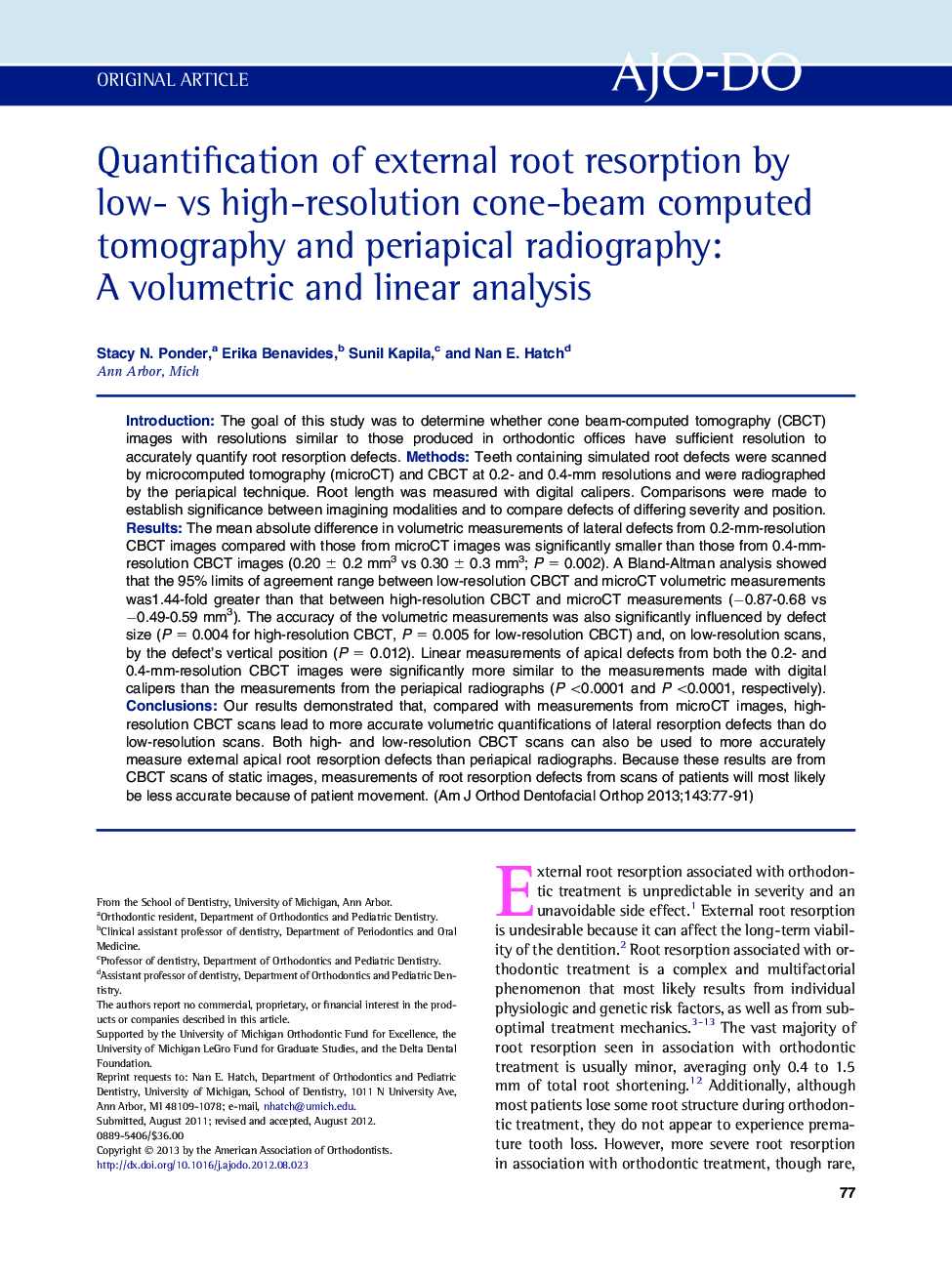| Article ID | Journal | Published Year | Pages | File Type |
|---|---|---|---|---|
| 3116346 | American Journal of Orthodontics and Dentofacial Orthopedics | 2013 | 15 Pages |
IntroductionThe goal of this study was to determine whether cone beam-computed tomography (CBCT) images with resolutions similar to those produced in orthodontic offices have sufficient resolution to accurately quantify root resorption defects.MethodsTeeth containing simulated root defects were scanned by microcomputed tomography (microCT) and CBCT at 0.2- and 0.4-mm resolutions and were radiographed by the periapical technique. Root length was measured with digital calipers. Comparisons were made to establish significance between imagining modalities and to compare defects of differing severity and position.ResultsThe mean absolute difference in volumetric measurements of lateral defects from 0.2-mm-resolution CBCT images compared with those from microCT images was significantly smaller than those from 0.4-mm-resolution CBCT images (0.20 ± 0.2 mm3 vs 0.30 ± 0.3 mm3; P = 0.002). A Bland-Altman analysis showed that the 95% limits of agreement range between low-resolution CBCT and microCT volumetric measurements was1.44-fold greater than that between high-resolution CBCT and microCT measurements (−0.87-0.68 vs −0.49-0.59 mm3). The accuracy of the volumetric measurements was also significantly influenced by defect size (P = 0.004 for high-resolution CBCT, P = 0.005 for low-resolution CBCT) and, on low-resolution scans, by the defect’s vertical position (P = 0.012). Linear measurements of apical defects from both the 0.2- and 0.4-mm-resolution CBCT images were significantly more similar to the measurements made with digital calipers than the measurements from the periapical radiographs (P <0.0001 and P <0.0001, respectively).ConclusionsOur results demonstrated that, compared with measurements from microCT images, high-resolution CBCT scans lead to more accurate volumetric quantifications of lateral resorption defects than do low-resolution scans. Both high- and low-resolution CBCT scans can also be used to more accurately measure external apical root resorption defects than periapical radiographs. Because these results are from CBCT scans of static images, measurements of root resorption defects from scans of patients will most likely be less accurate because of patient movement.
